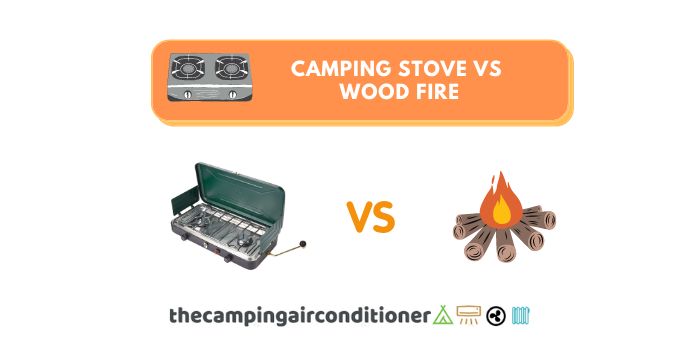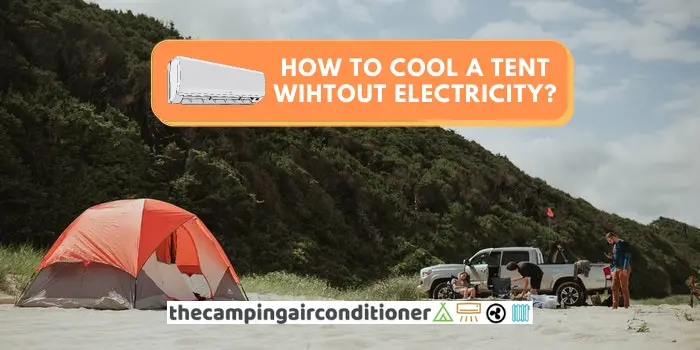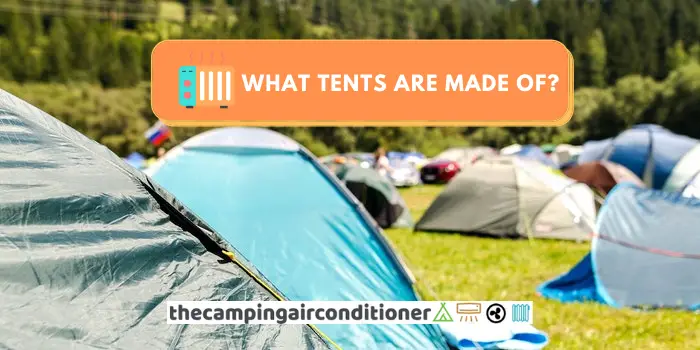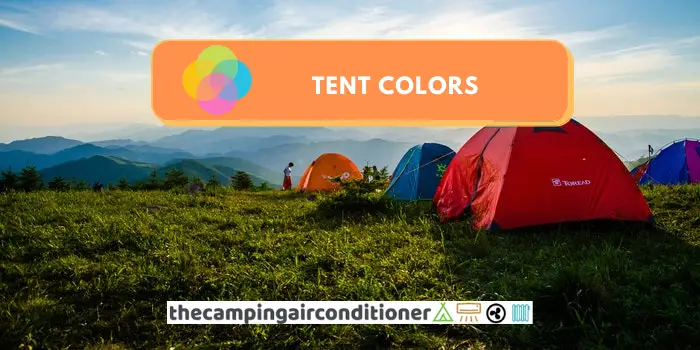So, you cannot decide between a camp stove and a campfire, and you want to go with a safe and easy way to make your camping hassle-free, right? Why do you need a camp stove when you can cook with a campfire? What is a safer option for camping? What is, ultimately, the best option?
There is no best option, but the one that will suit your camping needs better given that each of them comes with some upsides and drawbacks. In our opinion, the decision between the two options should depend on the time length of your trip, the conditions of your campsite, and personal preferences.
Many prefer a campfire since they find it safe in the wild, praise the fact that almost no camping gear is required, and enjoy cooking and socialising around it. However, campfires can cause unfortunate accidents and pose risks to the life of campers and impact the environment adversely.
On the other hand, a camp stove has many safety mechanisms and gives you more control and freedom. Overall, you will find cooking while camping effortless, but it will have some downsides, such as bringing fuel (i.e. propane or butane canisters).
If you are here, it means you want to gather all the information before going ahead and making your decision. Keep reading this article to check our comparisons for camping stoves vs wood fires, and answer your queries.

What Are the Benefits and Downsides of Using a Cooking Stove as Compared to the Open Fire?
Both open fire and camp stoves will have some advantages and downsides. Overall, camping stoves offer you more comfort and flexibility, and you might experience fewer headaches (especially if it is raining – learn how to cook in the rain while camping here).
Camping stove - Advantages and Disadvantages
Both open fire and camp stoves will have some advantages and downsides. Overall, camping stoves offer you more comfort and flexibility, and you might experience fewer headaches (especially if it is raining – learn how to cook in the rain while camping here).
A camping stove will offer better convenience and control, which is essential for preparing different kinds of meals – a modern camping stove, such as the Coleman dual burner propane stove, come with valves that allow you to control flames
Furthermore, you do not need to worry about collecting dry wood and finding a safe to start a fire unless you are using a portable wood stove (which will require firewood).
Furthermore, a camping stove can be used regardless of weather conditions, and you can cook your meal whenever required. The low and protected flame will be easy to manage, and you can shut it off instantly if you notice any danger.
Be mindful, though – avoid getting your device wet since the water might damage the ignition and valve systems!
Camp stoves are compact and lightweight, allowing you to move them if required (i.e. in case of rain or you need to change your camping kitchen location, you will easily move them around).
They also come with internal safety mechanisms, such as precise valves and leakproof hoses, giving you peace of mind to use them. Overall, they also tend to generate a cleaner flame and will not cause large volumes of carbon emission, being eco-friendly solutions.
Some of the disadvantages of these devices are:
- The need to bring and store fuel in your campsite
- Costs associated with buying and using it are higher than a campfire
- Maintenance is required to ensure proper functionality
- Extra camping gear to be carried around
Wood fire - Advantages and Disadvantages
Some campers love the sensation provided by a campfire – a combined feeling of wilderness and coziness make them a go-to option for survivalists.
Campfires are known to be cost-effective since you probably will need minimal camping gear (if any), such as a waterproof and windproof lighter. Less camping gear means less travelling load, which is ideal for backpackers and hikers.
You can simply start a fire using some tinder and kindling and keep it going for hours with some good firewood (give preference to hardwood since they will burn longer and produce more controlled flames – if you want to know what is the best firewood for a campfire, read this article.
A campfire can reach up from 900°F (~482°C) to 2000°F (~1100°C), meaning can you cook different types of meals. Further, you can also choose how big it will be, providing flexibility and scale, especially if you are camping in large groups.
Some researchers have also concluded that campfires can bring some health benefits, such as relaxation and reduced blood pressure levels, which is incredible!
However, on the downside, an open fire will require more safety measures, and you will have to be vigilant to prevent accidents. Some parks even do not allow it in the US – check the National Park Services website and your preferred park requirements.
Also, wood fire will need a proper setup, and harsh weather conditions can be dangerous and extinguish the flames – You will not have complete control over the fire, and you might not be able prevent an accident.
Even though you can always start a fire in a different place, once it is lit, there is no real mobility, which is not ideal for unpredictable weather conditions.
Overall, cooking on an open fire is not easy for inexperienced campers since they need to master temperature control and other skills to prevent an accident.
Is a camping stove necessary?
A camping stove might be necessary if you don’t know how to start and handle a campfire or if your preferred park does not allow campfires, or when there are wood fire bans.
Further, if there is a rainy weather forecast, considering a stove might be wise since you can easily move them around and cook during the rain.
They are also the best option to prepare and/or heat uncooked foods and a reliable heating source to boil water, especially if you are camping or hiking in a remote location.
If you have plenty of wood available or are not planning to cook on your camping trip, they are not required. You can bring crackers, nuts, pre-made sandwiches, and fruits and vegetables, and you will be fine for a short-term trip.
In our opinion, it will ultimately depend on your camping duration. For short trips, such as weekends away, you will be fine without a camp stove, and a campfire might be actually a funny activity to practice with your friends and family.
However, it might be good to have a camp stove for longer trips for convenience and safety – you shouldn’t solely rely on campfires for cooking, given the unpredictable weather and control of the quality wood available.
When to use a camping stove or a wood fire?
Camping stoves are ideal if:
- You don’t know how to set up a fire
- You want more convenience and comfort
- You want to have flame control and more safety mechanisms
- You are worried about weather conditions
- You don’t want to leave any trace behind
- You don’t want to impact the local ecosystem
- You don’t want to create dirt (campfires are normally dirtier than stoves)
On the other hand, wood fires should be your choice if:
- You enjoy the coziness provided by campfires
- You like the taste provided by grilling food on a wood fire
- You are into survivalism
- You want to create a social activity while camping – an excellent option for gathering people and roasting marshmallows.
Can I use a camping stove in my tent?
Even though it is not ideal, because of the fire accident and CO poisoning risks, you can use a camping stove inside your tent provided you follow some important safety measures, which include:
- Keep a constant flow of air circulation
- Monitor Carbon Monoxide (CO) levels using a carbon monoxide detector
- Take any flammable material out from your tent
- Use your camping stove over a fire mat to prevent overheating
- If possible, use a tent with a stove jack to exhale polluted air
A camping electric skillet might help you heat and prepare your meal if you have electric hookups and connections close to your tent.
For a detailed step-by-step on how to use a stove insde your tent, read this post.
Conclusion
As detailed above, the ultimate choice between wood fire vs camping stoves should be driven by many factors, which include:
- Weather conditions –
- Comfort and convenience
- Cooking preferences, such as flame control and food taste
- How long you will be camping
- Impact on the environment.
We use both, and we don’t think one option should exclude another. There are multiple occasions the benefits of a woodfire will outweigh stoves’ benefits and vice-versa.
Whatever method you choose, make sure to check for potential fire bans on your campsite.
Enjoy your camping trip!






